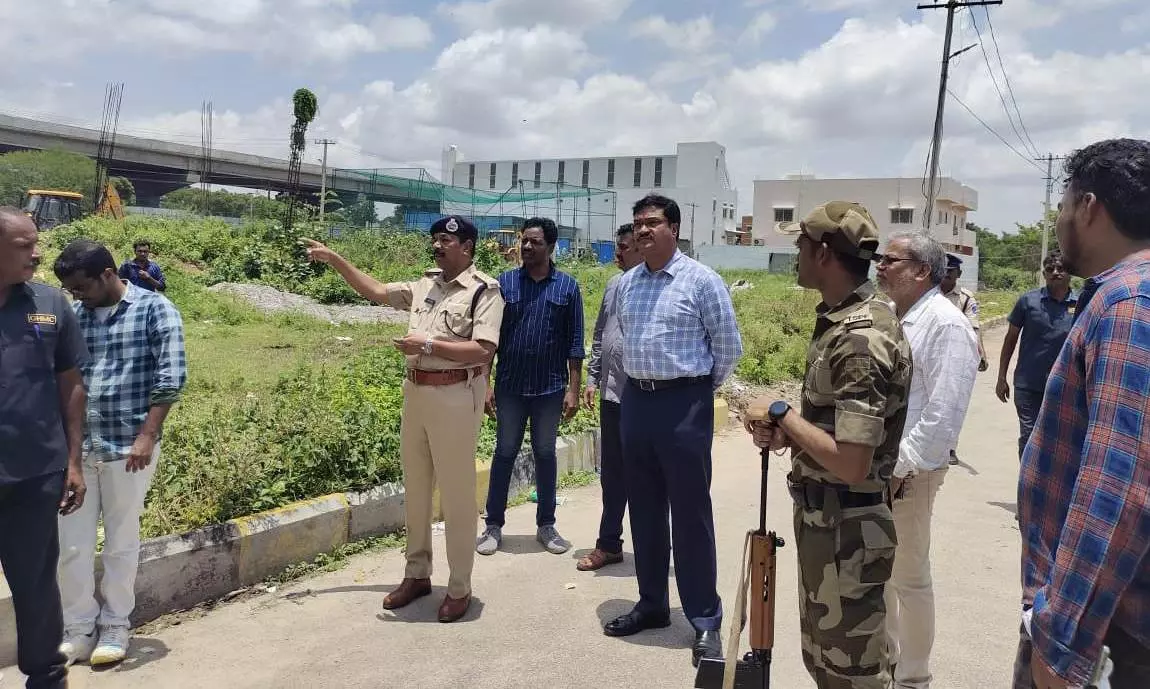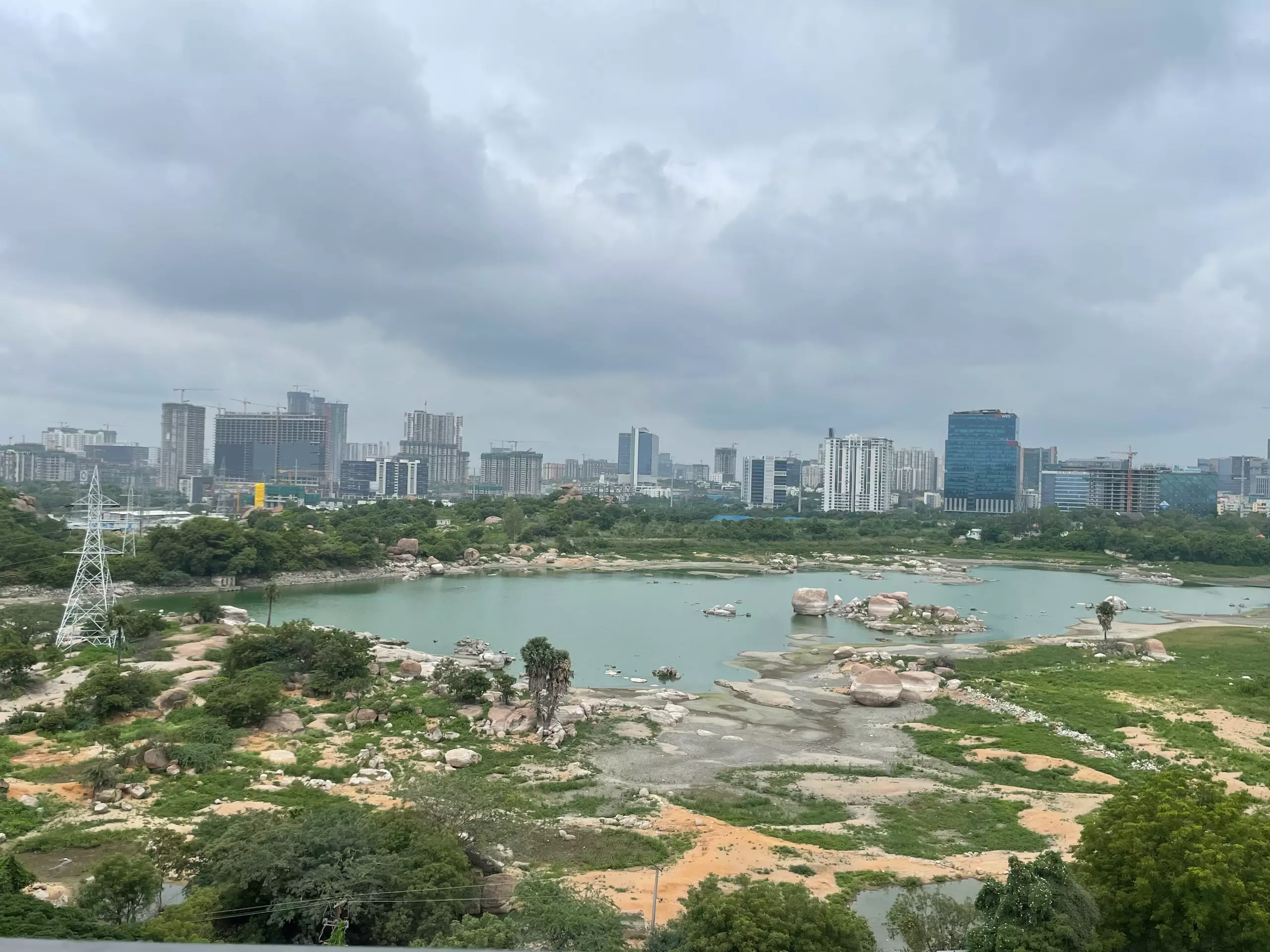
Hyderabad: “It is not that we are just turning up at the lake site one fine morning and demolishing the structures. We are following due process,” said Hyderabad Disaster Response and Asset Monitoring and Protection (HYDRAA) commissioner and senior police official A.V. Ranganath.
The actions of HYDRAA and its head Ranganath are widely talked about these days for their crackdown on structures in the full tank level (FTL) and buffer zones of lakes in and around the capital city of Hyderabad. Handpicked by Chief Minister A. Revanth Reddy for the uphill task, Ranganath has scored points for not giving in to pressure and deploying earthmovers to raze structures belonging to the rich, politicos and influential persons.
So much so, Ranganath has come under fire from Khairatabad MLA D. Nagender who was booked on the HYDRAA’s complaint against aiding and abetting the demolition of a GHMC compound wall.
“Facts are there for everyone to see and decide,” Ranganath said a conversation with Deccan Chronicle, on not just politicians targeting him but also on the massive drive to clear the lakes of encroachments. Contrary to general belief that the demolition teams were arriving at the site suddenly and razing the structures to rubble, HYDRAA has been meticulously verifying the records in the first phase of vetting.
“We are issuing notices to the owners of these structures to furnish the plan sanctioned by the respective local bodies,” Ranganath pointed out.
Only after completing the formalities, including issue of notice and receipt of documents, if any, from the encroachers, were the HYDRAA teams going ahead with demolitions. While structures in the FTL are being demolished on priority, clearing of the same in buffer zones would be taken up in the next phase, Ranganath said.
Asked about the encroachments in the area covered by GO 111, the government order meant to protect Himayatsagar and Osmansagar, Ranganath said the mandate given to HYDRAA was to clear encroachments in the FTL and buffer zones of lakes and government land.
The senior police official was thankful to the Chief Minister for his vision of setting up an exclusive agency and pumping in funds and personnel to deal with the menace of encroachment that grew due to patronage from all the previous governments. In several cases, the officials also were hand-in-glove with the builders and issued plans and occupancy certificates. “We will bring these discrepancies to the notice of the government for further action,” he said.
The drive is expected to bring awareness about the FTL and buffer zones among the property buyers and make it almost impossible for the encroachers to obtain relief from the courts by producing fake and misleading information.
This initiative is commendable, as the government has finally mustered the political will to protect our lakes — something that has been lacking for 40 years. Just one acre of land can hold four million litres of water, saving the government ₹350 crore-`400 crore that is spent on road repairs after floods during each monsoon. A thorough revenue analysis should be conducted to estimate the savings if all encroached land is reclaimed, though this will be challenging due to the involvement of the land mafia
B.V. Subba Rao
Former member, lakes and reservoirs water domain
Bureau of Indian Standards.
There are thousands of encroachments, and it’s unclear if HYDRAA has the necessary information. They should develop a comprehensive plan of action. Currently, the demolitions seem random. Restoring lakes involves much more than just demolition. We need to know what actions will follow, as well as preventive measures. Given the influence of vested interests, citizens are watching to see how long the demolition efforts will continue.
Narsimha Reddy Donthi
Environmental expert, researcher
Do we want our lakes or not? The answer is simple. People need to understand that the solution to water shortages in summer and flooding in monsoon lies in our lakes. Historically, Hyderabad and Telangana have been rich in lakes and tanks. Many places where you now see a Katta Maisamma temple had a lake nearby, as the Goddess is considered a protector of lakes. Any step taken to preserve them is a welcome one
Anuradha Reddy
Indian National Trust for Art and Cultural Heritage (Intach), Hyderabad, convener
Credai welcomes the decision of the government’s and HYDRAA to take strict action against encroachers. There has to be regulation when encroachment on such a scale happens near water bodies.
V. Rajashekar Reddy
President, Hyderabad chapter of Confederation of Real Estate Developers’ Associations of India (Credai)
HYDRAA is doing a good job, but it’s concerning that illegal constructions are still happening. But people are paying attention now because of HYDRAA
Ranjitha P.
IT employee
This is something the government should have addressed earlier; it’s good that officials are noticing and working on it now.
Soughanthika Lakshman
Architecture student
We, as humans, should protect nature. We shouldn’t destroy it.
T. Ishan Kumar
Awaiting a job
There are so many lakes, ponds and tanks which are either fully or very close to being fully encroached by big developers. The way HYDRAA is demolishing the buildings, it is causing fear among encroachers.
Muthuswamy
Real estate developer, Thimmaiguda
